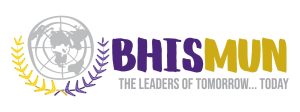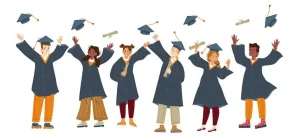Pros And Cons Of Traditional Teaching: A Detailed Guide

Traditional teaching methods are often characterised by teacher-centred instruction. They focus on textbooks and lectures. They have been the predominant approach in education for many years. Their effectiveness can vary depending on the context, subject matter, and individual learners.
So today, let’s learn if traditional teaching methods are the perfect fit for your child. Find out its advantages and drawbacks to choose the best for young learners.
What are the Advantages of Traditional Teaching Methods?
Traditional teaching methods are characterised by teacher-centred lectures, textbooks, and standardised assessments. They have been an educational mainstay for centuries. Let’s explore the advantages of traditional teaching methods.
- Structured Environment for Learning
- Focuses on Foundational Skills
- Clear Authority of A Teacher
- Availability of Resources
- Has A Proven Track Record
- Assessment is Easy
- Instruction is Teacher-Centered
- Covers More Content
Traditional methods provide a structured and organised learning environment for the students. The curriculum is often well-defined, and students follow a set schedule. It can create a sense of order and routine.
Traditional methods often emphasise core literacy and numeracy skills. They are essential for further academic success and real-world applications.
In traditional classrooms, the teacher typically holds a central and authoritative role. This clarity in authority can help maintain discipline. It also facilitates a focused learning atmosphere for students.
Traditional teaching methods often rely on textbooks and other printed materials. They provide tangible resources that students can reference. This can be particularly helpful for students who prefer physical learning materials.
Traditional methods have been used successfully for many years. They have a proven track record of imparting knowledge and skills to generations of students. They establish a sense of familiarity for both educators and learners.
Assessment in traditional methods is often straightforward. It relies on quizzes, exams, and written assignments. This simplicity can make it easier for educators to evaluate students’ understanding of the material.
Some students may benefit from a teacher-centred approach. There, the instructor takes a more active role in guiding the learning process. This can be especially effective for certain subjects. And also for learners who require more direction.
Traditional methods can be efficient in covering a large amount of content within a specified time frame. This is important in academic settings where there is a prescribed curriculum to follow.
What are the Disadvantages of Traditional Teaching Methods?
Traditional teaching methods offer the above advantages. But they also come with limitations in today’s evolving world. Let’s take a look at the disadvantages of traditional teaching methods.
- Student Engagement is Limited
- Lacks A Real-World Connection
- Lacks Personalisation
- Contrasts Between Memorisation and Understanding
- The use of Technology is Limited
- Not Flexible
- Has A Potential for Boredom
- Overemphasises Grades
- Limited Emphasis on Life Skills
Traditional methods can lead to passive learning. So students become recipients of information. And don’t be active participants in the learning process. This lack of engagement can hinder deeper understanding and retention.
Traditional methods often fail to connect learning to real-world applications. It makes it difficult for students to see the relevance of what they are learning.
Traditional methods may not cater to individual learning styles and paces. Students come with diverse learning preferences and abilities. They may find it challenging to thrive in a one-size-fits-all approach.
Traditional methods often emphasise memorisation. They focus on recalling facts. They don’t promote deeper understanding and critical thinking skills. This can result in surface-level comprehension. And may not be applicable in real-world scenarios.
Traditional teaching methods may not fully leverage the benefits of modern technology. It is an era where technology plays a significant role in various aspects of life. The limited integration of tech tools in traditional methods can be a disadvantage.
Traditional methods can be rigid and inflexible. They make it challenging to adapt to the evolving needs of learners. They don’t incorporate innovative teaching approaches. This lack of flexibility may hinder the development of creative and adaptable thinking.
The lack of variety in traditional methods can lead to student boredom. Because the lessons primarily involve lectures and textbooks. So students may become disinterested, affecting their motivation and enthusiasm for learning.
Traditional teaching methods often place a strong emphasis on grades and standardised testing. This focus can create a competitive atmosphere. It may lead to a prioritisation of grades over a genuine understanding of the material.
Traditional methods may not adequately address the development of essential life skills. It includes critical thinking, problem-solving, collaboration, and communication. These are increasingly valued in the modern world.
What is the Importance of Traditional Teaching Methods?
Traditional methods are not inherently bad. They can be effective in certain situations and in combination with other approaches. The effectiveness of any teaching method depends on the context, the teacher, and the students. What works for one may not work for another.
Education is evolving as new technologies and pedagogical approaches are emerging. It allows for more personalised, engaging, and relevant learning experiences. The key is to find a balance of approach. So, educators should utilise the strengths of traditional methods and incorporate innovative approaches. It meets the needs of today’s diverse learners and prepares them for the future.
Traditional teaching methods have been the foundation of education for many years. They have proven effective in certain contexts. However, there is a growing need for more student-centered, interactive, and adaptable approaches. The ideal teaching method at Billabong International High School involves a thoughtful combination. It combines traditional and innovative strategies. It is tailored to the specific needs and dynamics of the learning environment.













